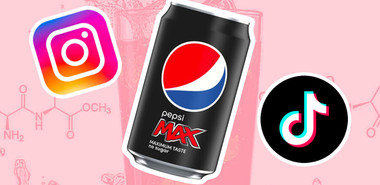| # NAME | Magnesium per 100g |
|---|---|
| 535mg | |
| 350mg | |
| 230mg | |
|
4
|
507mg |
|
5
|
197mg |
| 235mg | |
| 157mg | |
| 64mg |
- Magnesium is an essential nutrient and can only be obtained through diet and supplementation.
- Seeds, nuts, legumes, leafy green, cacao, fish, quinoa and whole grains are great sources of magnesium.
- Causes of magnesium deficiency range from poor diet, food processing and chronic digestive issues.
- Magnesium deficiency symptoms can include headaches, fatigue, cognitive dysfunction, muscle spasms and high blood pressure.
- Eating a nutrient-dense, whole food diet is the best way to avoid magnesium deficiency.
Magnesium is an essential nutrient that our bodies can’t produce, so it must be obtained through diet or supplements.
Known for easing muscle soreness and aiding relaxation, magnesium is crucial for over 300 bodily functions like regulating blood pressure, energy production, blood glucose control, protein synthesis, and nerve function.
However, about two-thirds of the Western population falls short in magnesium intake, a deficiency often attributed to dietary habits and changes in food production.
So, here are some foods high in magnesium to help you meet your daily needs.
Related: The Best Magnesium Supplements in Australia
An essential nutrient is a nutrient required for normal body function that a) cannot be made by the body or b) cannot be made in enough quantity for good health and must be sourced via your diet or supplements.
Top Foods High in Magnesium 🍌🥬🥜
Seeds
Raw seeds are nutrient-dense bombs packed with protein, omega-3, fibre and magnesium!
You can easily add more seeds into your diet to increase your magnesium intake. Add some to your morning smoothie, sprinkle seeds on your salad, make seed-filled protein balls or enjoy a chia pudding.
-
Pumpkin Seeds (pepitas) 535mg per 100g
-
Linseeds (flaxseeds) 392mg per 100g
-
Sunflower Seeds 370mg per 100g
-
Sesame Seeds 340mg per 100g
-
Chia Seeds 335mg per 100g
Nuts
Like seeds, nuts are rich in the mineral, magnesium. Full of quality fats, nuts are also going to help fill you up and keep you feeling energised.
Stick to raw or activated nuts and avoid salted, roasted or flavoured. You can add nuts to almost anything – your muesli, a salad or toppings on yoghurt. Crush nuts to make a crumb on your fish or use a nut butter for a tasty dressing.
-
Bazil Nuts 350mg per 100g
-
Almonds 260mg per 100g
-
Cashews 260mg per 100g
-
Hazelnuts 160mg per 100g
Steer clear of salted and flavoured nuts and opt for raw or activated nuts of maximum nutrient benefits.
Legumes
Soybeans, kidney beans, lentils, chickpeas and split peas are just some of the foods in the legume family that are great sources of magnesium.
Legumes can easily be added to salads, rice or pasta dishes. You can use them in soups or combine them into baked treats such as black bean brownies.
You can also find many packaged foods made with legumes such as tofu which is made out of soya beans, hummus or pasta.
-
Soya Beans 230mg per 100g
-
Kidney Beans 140mg per 100g
-
Split Peas 95mg per 100g
-
Lentils 82mg per 100g
-
Lima Beans 74mg per 100g
-
Chickpeas 27mg per 100g
Cacao
We’re not trying to fuel your chocolate addiction, however, your sweet tooth may be leading to an increased magnesium intake. Raw cacao is one of the best sources of magnesium.
Before you reach for a Mars Bar or a block of Cadbury Chocolate, you need to opt for dark chocolate with at least 70% cacao to get the benefits.
-
Raw Cacao 507mg per 100g
Quinoa
While quinoa is used as a whole grain, it’s technically a seed. It’s just as versatile as grains like rice and a good option for those wanting to go gluten or wheat-free.
Quinoa is also a good source of protein particularly for those on a meat-free diet.
You can use it in meals as a direct sub for rice. Try it as a porridge, use it in a salad or combine it in a veggie pattie mix. Use in sweet dishes such as brownies, cakes and cookies.
-
Quinoa 197mg per 100g
Whole Grains
If you’re consuming a diverse range of whole grains, chances are you’re consuming a good amount of magnesium.
If not, this is another good reason to make the switch from refined grains.
Whole grains such as buckwheat, whole oats, bulgur and wild rice are great sources of magnesium.
Use them in sweet or savoury dishes as a substitute for refined flours, cereals and pasta.
-
Whole Oats 235mg per 100g
-
Buckwheat 221mg per 100g
-
Wild Rice 177mg per 100g
-
Bulgur 164mg per 100g
Dark Leafy Greens
You can never have too many dark leafy greens on your plate and if you’re wanting to boost your magnesium intake, it’s time to add a handful more!
Not only are dark leafy greens such as spinach, swiss chard and kale a great source of magnesium, but they also contain vitamins and antioxidants essential to health.
Make a leafy green salad, serve steam greens as a side, throw them into your smoothie or juice. So versatile, so tasty and incredibly nutrient-dense.
-
Spinach 157mg per 100g
-
Swiss Card 150mg per 100g
Fish
Fish is well known for being a great source of omega-3 fatty acids, but it is also high in magnesium.
Fish is also high in protein which aids the absorption of magnesium.
Raw tuna is one of the highest in magnesium, but you can also benefit from consuming salmon, mackerel and even some shellfish such as prawns.
-
Tuna 64mg per 100g
-
Mackeral 60mg per 100g
-
Prawns 51mg per 100g
-
Salmon 25mg per 100g
Common Causes of Magnesium Deficiency 😰
Magnesium deficiency is commonly overlooked because the causes and signs vary.
A magnesium deficiency can be caused by:
- Western diets lacking whole foods (like those listed above) and high sugar, high salt and high saturated/trans fat refined foods.
- Food processing techniques that remove the germ or bran of the plant.
- Soil depletion and modern farming techniques.
- Digestive issues with poor absorption ability such as celiac or Chron’s disease
- Some medications such as fluid tablets and diuretics
- Alcoholism
- High stress / anxiety
Stress can increase magnesium loss and lead to a deficiency. As a vicious cycle, magnesium deficiency can enhance your body’s susceptibility to stress. If you live a high stress lifestyle, it might be worth checking your magnesium status!
What Signs of Low Magnesium? 🤔
Symptoms of magnesium deficiency can be subtle such as headaches or reduced cognitive function to more serious such as high blood pressure and increased risk of type 2 diabetes.
These can be experienced by adults and children.
- Headaches
- Fatigue
- Loss of appetite
- Reduced cognitive function
- Reduced attention space
- Mood swings and imbalances
- Irritability
- Nervousness
- Muscle spasms/cramping
- High blood pressure
- Cardiovascular disease
- Increased risk of type 2 diabetes
Benefits of Taking Magnesium ✅
- Reduces Muscle Cramps and Spasms: Magnesium plays a key role in muscle function, helping to alleviate cramps and spasms.
- Improves Sleep Quality: It has a calming effect on the nervous system, which can aid in better sleep.
- Supports Bone Health: Essential for bone formation and maintenance, reducing the risk of osteoporosis.
- Aids Digestion: Magnesium can relieve constipation by relaxing intestinal muscles.
- Regulates Blood Sugar Levels: Important for insulin function, helping manage or prevent diabetes.
- Reduces Anxiety and Stress: Known to have a calming effect, potentially reducing symptoms of anxiety and stress.
- Boosts Energy Production: Crucial in converting food into energy.
- Supports Healthy Pregnancy: Vital for both mother and baby’s health during pregnancy.
- Prevents Migraines: Some studies suggest magnesium can prevent or alleviate migraines.
Related: Magnesium Health Benefits
How to Prevent Magnesium Deficiency ✋🏻
One of the best ways to prevent and manage a magnesium deficiency is through your diet. Eating a whole foods diet filled with magnesium-rich food sources such as nuts, seeds, legumes and leafy greens will help you average an optimal intake.
However, if you suffer from a chronic digestive disorder, high stress or conditions such as ADHD, supplementation may be a great option.
Working with a nutritionist or naturopath can help to identify if your diet is lacking in magnesium or if you have underlying issues that may affect your body’s ability to absorb and utilise magnesium.
Foods High in Magnesium FAQs
How can I replenish my magnesium fast?
How can I get 100% magnesium daily?
Consume a balanced diet rich in magnesium, including whole grains, nuts, seeds, legumes, and leafy greens, or use supplements if recommended by a healthcare provider.
Which fruit has the most magnesium?
Bananas are commonly known for their magnesium content, but avocados and dried figs generally have higher levels
Is it true the human body can’t make its own magenisum?
Yes, our bodies don’t make their own magnesium, so we have to source it from supplements and food.
How much magnesium do we need per day?
What about potassium? Do we need that too?
Yes, potassium is essential for heart health, blood pressure regulation, muscle function, and nerve signaling. It’s important to maintain adequate levels through diet.
Potassium and magnesium are different but both are essential minerals. Potassium is key for heart function and fluid balance, while magnesium supports muscle and nerve function, bone health, and energy production. They work together in the body but have distinct roles.











